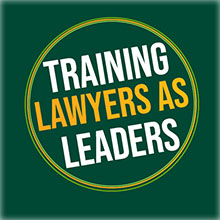
Two hunters were out in the woods when one suddenly fell to the ground. His eyes rolled back in his head, and he seemed to stop breathing. The other hunter frantically took out his cellphone and called 9-1-1. As soon as the call connected, he yelled out, “My friend Bubba is dead! What can I do?” The operator calmly replied, “Take it easy. I can help. Just listen to me and follow my instructions. First, let’s make sure he’s really dead.” A short pause ensued, and the operator then heard a loud gunshot. The hunter came back on the line and said,
“Okay… now what?” [i]
Our modern society provides constant noise. Everywhere we turn there is something to listen to – 24/7 news, social media videos, audiobooks, podcasts, satellite/internet radio . . . the list goes on and on. While noise is frequent, we rarely see anyone simply being in the moment, truly engaged in observing and understanding the world. Instead, we pull out our phones during any down time to check email and social media. We are losing the art of doing nothing—of letting our brains have creative rest. We also are forgetting how to really listen.
For me personally, these constant distractions make it difficult to focus on one thing at a time. This is true not only during personal time; it happens at work as well. When I am on a business-focused Zoom call, even with just a few people, I constantly glance at my phone to read text messages or check that most recent email in case it demands my attention. In doing so, I may be hearing the conversation on the Zoom call, but am I really listening? A Russian proverb says, “If you chase two rabbits, you won’t catch either one.” When I multitask, as the expression goes, am I really catching either of the rabbits I need to catch?
To compound the issue, we lawyers listen to respond rather than listening to understand. Law school has trained us – and done a fine job at it – to listen to what another person is saying and immediately formulate an argument that rebuts that person’s position. I have learned this the hard way with my lawyer-spouse, Jeanine. The mark of a great lawyer, after all, is the power of oration and persuasion, and based on how our arguments usually go, Jeanine is clearly the superior lawyer. But a different and more important question is whether the responding person really understood the first person’s position or argument before choosing to respond.
The distinction is key, particularly when personal relationships and difficult subjects are involved. From conducting voir dire to negotiating a business deal, real communication requires effective listening just as much as (if not more than) effective speaking.[ii] Listening actively to what someone says rather than focusing on the literal meaning of the words spoken can provide greater insight and improve productivity within your organization.[iii] Colleagues who feel they have been heard are more likely to feel valued and remain loyal to the organization.[iv] In addition, leaders who actively listen catch things that other would miss and are better informed when making decisions.[v]
I suspect that I am not alone in these listening faults. The lack of civil discourse present in society certainly seems to confirm that others struggle with this as well. So, how do we train ourselves to really listen to others and be engaged in the moment?
Artful listening includes hearing not only what is said but also what is not said.[vi] Non-verbal cues––body language, posturing, and tone, for example––can convey a great deal about what is really being said.[vii] Maintaining eye contact and using reassuring facial expressions convey to the speaker that you are hearing them. When you also confirm what you heard and ask open-ended questions to follow up, you increase the likelihood you are truly communicating. Resist the temptation to interrupt or think only about what to say next; both diminish your ability to listen closely.[viii] Your non-verbal cues, especially those that signal you are bored or impatient can overpower anything that you say. This skill can be especially beneficial when giving feedback to a team member as you convey that this conversation is important.
Practicing artful listening can be done on a daily basis with friends, loved ones, and strangers alike. Becoming a master will help you build and maintain relationships. These deep relationships will pay dividends years after the first conversation. For lawyers, active listeners are better at witness examinations and voir dire during trial, at connecting with clients, with catching the nuances of office politics, and is critical for developing cultural competence. And for leaders, artful listening contributes to team trust, good decision-making, and fewer unpleasant surprises.
Law school provides ample opportunities to teach students to listen to respond, but it also provides opportunities to train students to artfully listen. Any course that focuses upon developing Legal analysis and problem-solving skills would be well served to include a section on active listening. Specific classes that focus upon relationships, such as client counseling, negotiations, or ADR, are also ripe for an artful listening discussion. Below are some exercises that can be used to practice artful listening.
A Meditative Moment[ix]
Have each student sit in a comfortable position and engage in mindfulness, closing their eyes, calming their breathing, and noting their heart rate and physical self. Are they calm and relaxed? Is some part of the body tense or tight? What is going on mentally – is the brain active and scattered or focused and calm? Spend a few moments with the students getting in touch with their bodies and minds using one or more of the following techniques:[x]
- Focus on the rising and falling of the breath;
- Pay attention to how your feet feel as they touch the floor;
- Do a full-body scan, starting at the top of the head and moving to the feet. Note any areas of tension.
- Imagine bright, warm sunlight streaming down on you;
- Let your mind think about whatever it wants – no judgment
- Talk to yourself like you’d talk to a friend.[xi]
For faculty comfortable with leading a meditation moment, feel free to use the techniques noted above. If you’d like to use an internet video, take a look at the resources available on Headspace.com.
After the students try these methods, have them think about what felt easiest and most calming for them.
Next, have the students think about a difficult or stressful situation. Note how the body and mind react. Now, try to refocus the students back to the state of physical and mental calm they were in previously.[xii] How might they do this in a professional setting while listening to a boss, judge, or client?
Active Listening Exercise
Pair all of the students. Ask each pair to arrange their chairs so that they are back to back. One student in each pair will be given a piece of paper with a couple of shapes on it. The second student sits with his or her back to the student holding the paper. The second student should not be able to see his or her partner’s paper, or the paper (with shapes) of any other student. Using only the methods of communication instructed, the second student will attempt to duplicate the shapes on the paper in front of the first student.
The shapes on the paper can be anything (they can be a star inside of a rectangle, a circle overlapping a square, trapezoid, and diamond, etc.). For an example, please see below.

For the first round, the student with the paper with shapes will describe the shapes and instruct his or her partner on how to draw the shapes on their paper. Give the students about a minute to complete the exercise, but explain that this is a one-way communication exercise; the students drawing cannot talk to their partners or ask questions.
After a minute, telling the drawing students to take out another piece of paper and try again. Give them another minute, but this time, it is a two-way communication exercise; allow them to talk to their partners and ask clarifying questions about the instructions they’re receiving.
Once done, have the students show their partners and each other their drawings, compared to the original. The first example (with one-way communication) is usually way off from the original, but the second example (with two-way communication) is usually much closer (comparatively speaking).
This exercise demonstrates how hard it is to understand exactly what someone is saying when they’re speaking to you. It also demonstrates the power of artful listening and the importance of asking good questions to clarify understanding.
[i] John C. Maxwell, Leadership Gold: Lessons I’ve Learned from a Lifetime of Leading 50 (Thomas Nelson 2008).
[ii] See Elle Kaplan, “Active Listening”: The Key to Strong Workplace Relationships, Productivity, and Personal Empowerment, Medium (Aug. 22, 2018), https://medium.com/@ellekaplan/active-listening-the-key-to-strong-workplace-relationships-productivity-and-personal-72650f32da4c.
[iii] Id.
[iv] Id.
[v] Id.
[vi] Sir Andrew Likierman, The Elements of Good Judgment, Harv. Bus. Rev. (Jan. 2020), https://hbr.org/2020/01/the-elements-of-good-judgment.
[vii] Kaplan, supra note 2.
[viii] Id.
[ix] Erin Olivo, Two Simple Mindful Meditation Exercises for Teachers, The Guardian (Dec. 6, 2015), https://www.theguardian.com/teacher-network/2015/dec/06/two-simple-mindful-meditation-exercises-for-teachers.
[x] Id.
[xi] Id.
[xii] Id.




